What do you need to know about O‘ahu traffic?
Just the word Hawai’i inspires people’s imagination as a tropical paradise – perfect for adventure and relaxation. But what doesn’t always cross people’s minds is the chill Aloha spirit of the locals who live on the island of O‘ahu. As a student at Brigham Young University – Hawaii, I have driven on these roads for nearly a year and a half and have come to notice that Hawai’i has many unique driving quirks that aren’t used anywhere else.
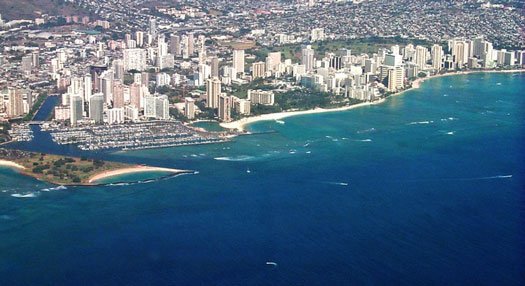
Waikīkī skyline. Photo courtesy of Wikipedia-Honolulu.
1. O‘ahu traffic is slower than your average traffic flow
O‘ahu has “rush hours” similar to everywhere else in America; however, our traffic conditions are rated as some of the worst in the nation. Here, excessive traffic happens not only during standard commuter times. Because the vast majority of short-term lodging is located within the metropolitan Waikīkī/Honolulu area, the ebb and flow of traffic continues throughout the day and into the evening.
Traffic issues are not just limited to the city. Long backups can happen at almost any time due to the massive amount of tourists travelling back and forth to the North Shore. These backups are due to excessive traffic, road conditions and/or vehicular accidents.
If you want to know exactly what the road conditions are currently at, click this link: https://www.localconditions.com/weather-oahu-hawaii/hi13/traffic.php
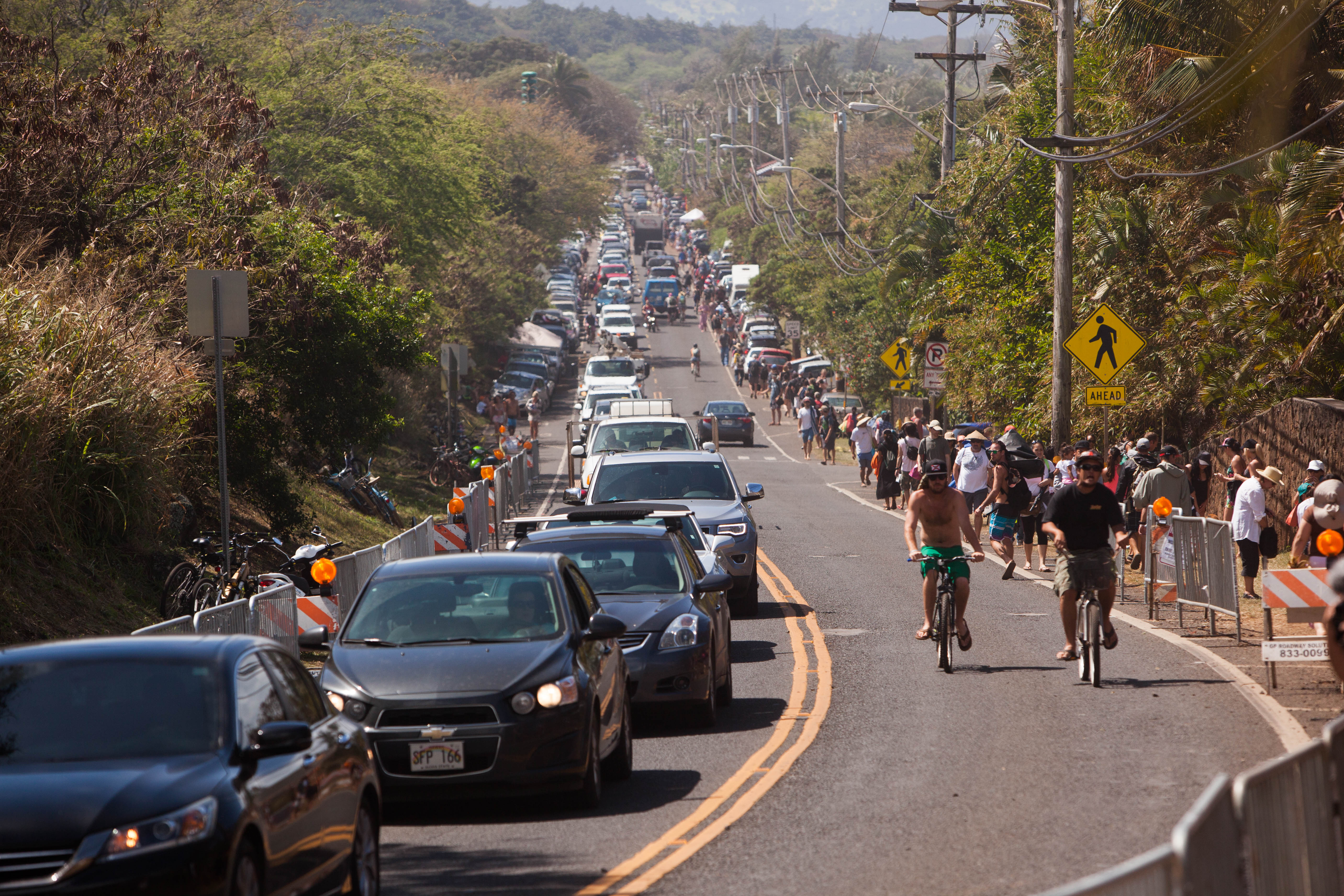
Traffic jam at Waimea, Kamehameha Highway on the North Shore of Oahu. Photo courtesy of Honolulu Civil Beat.
2. Vacationing in Paradise brings its own set of traffic issues
As one might expect with this huge melting pot of different cultures and driving experiences, the number of vehicles travelling across the island can create unique issues. One common occurrence is that tourists often find themselves so captivated by the beauty of the island that it causes them to drive slower than the posted speed limit or not pay as much attention to the road as they should. Tourists may pull over suddenly, in order to catch a breathtaking view, check out a random fruit stand, or try to grab a selfie with a turtle (spoiler alert: getting close to turtles and seals is illegal and strictly monitored). Others may block traffic as they try to pull in or out of a spot along the roadside. Once they do find a spot, many carelessly cross the street to get to the beach.
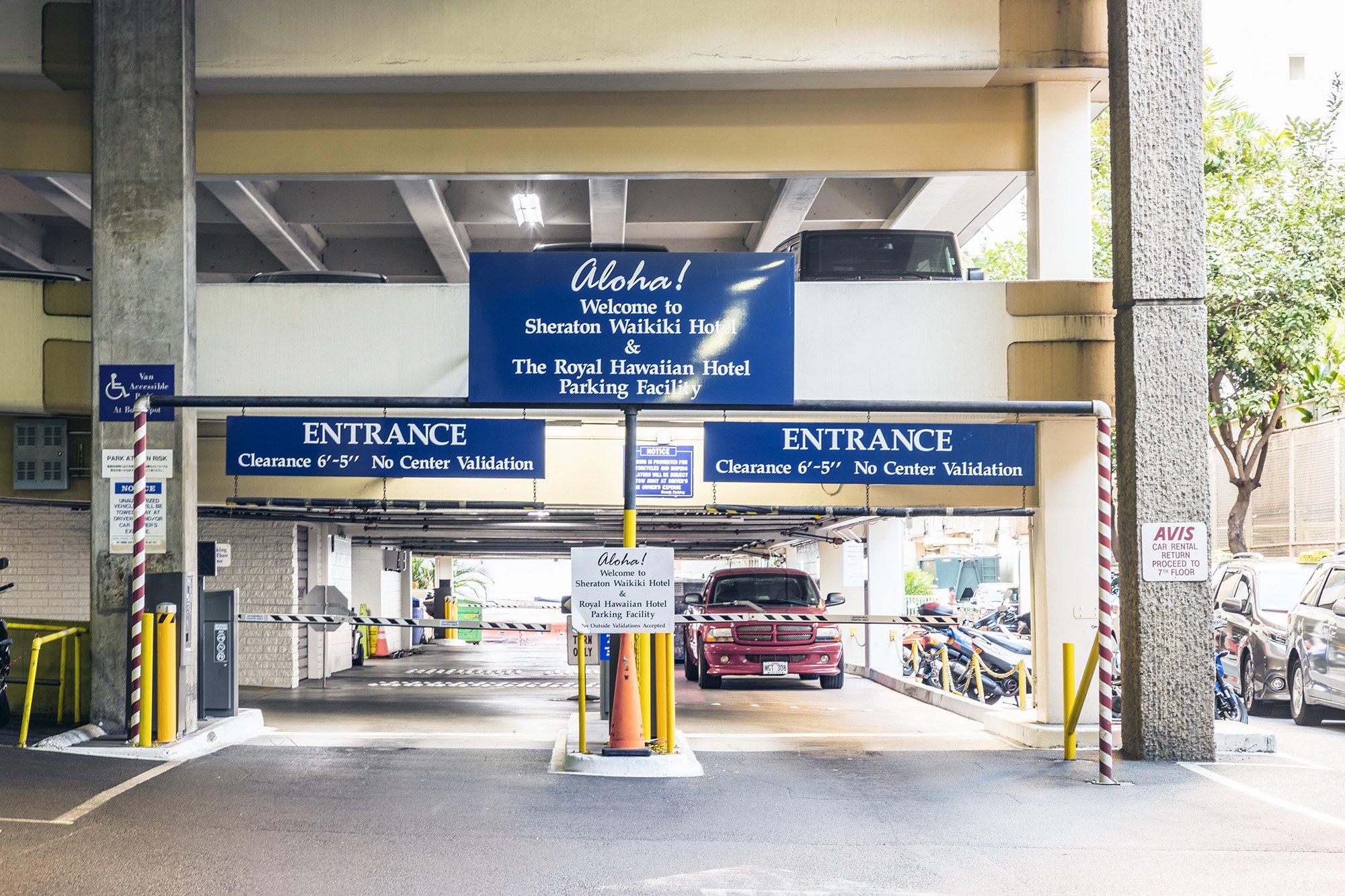
Most hotels provide onsite parking. Photo courtesy of Collections of Waikīkī.
3. Waikīkī/Honolulu has limited parking options
Since many places throughout the island only have limited parking, there are a few situations that you should look out for. Most of the parking on the street will have posted regulations. Ignoring these signs will almost always lead to a ticket or tow.
Practicing common courtesy can help you to avoid these situations.
Overnight Parking
To avoid these issues, many of the hotels on the island offer overnight parking for their guests (averaging around $35 per day).
Hourly Parking
For day parking, there are several paid parking garages available for those visiting an area for limited hours of the day.
When utilizing a paid space, make sure to ask if any of the stores or restaurants you visit validate parking.
Free Parking
If you don’t want to pay for parking, check out this great website: https://www.spotangels.com/blog/find-free-parking-in-honolulu/ to help you find parking options.
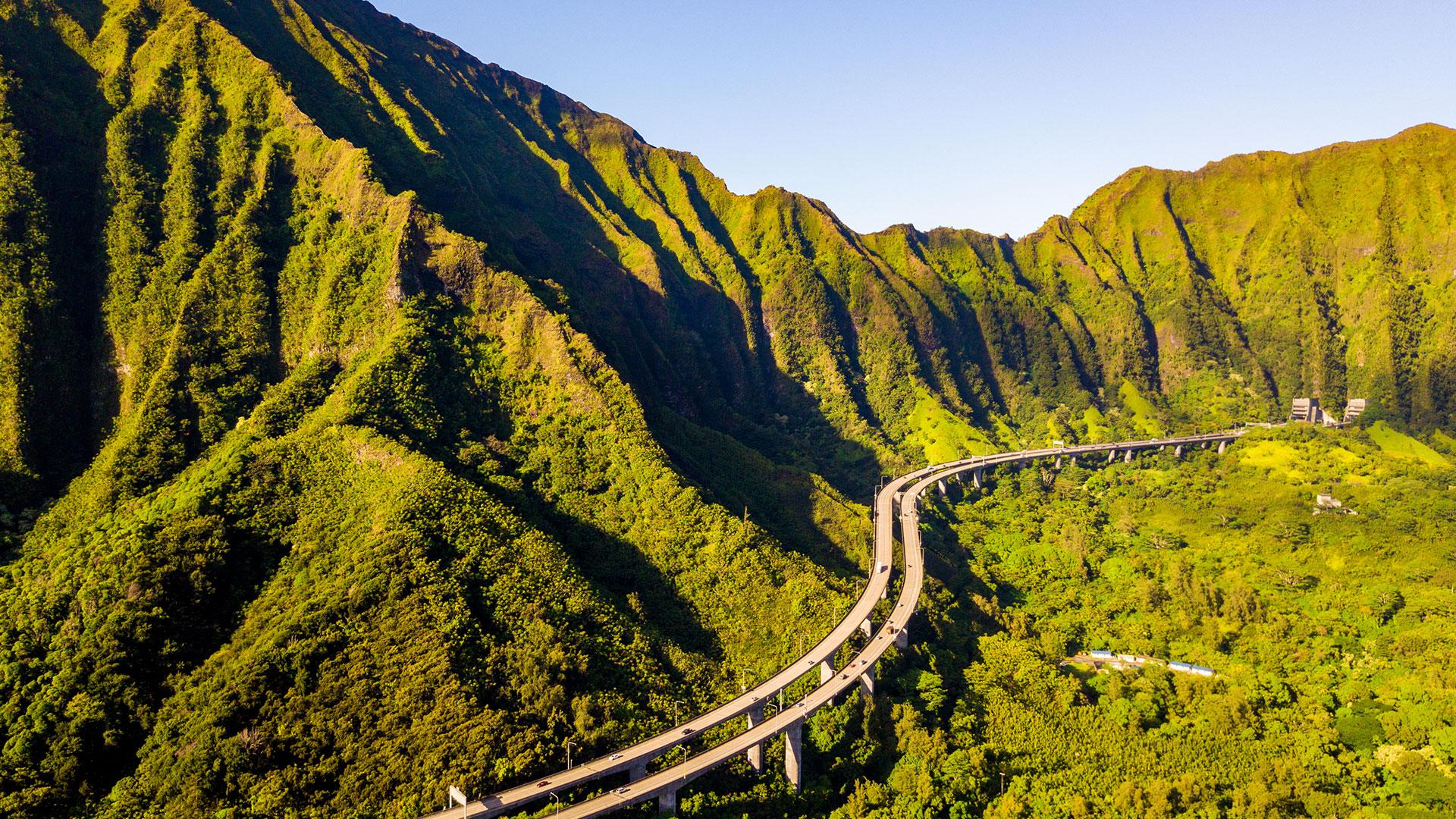
H3 highway Oahu, Hawaii. Photo courtesy of Liberty Travel.
4. Traffic beyond the big city of Oahu has it’s own challenges
Outside of the main highways connecting to Honolulu, the vast majority of roads are single lane in each direction with almost no passing lanes. The roads are often winding to accommodate the landscape. This leaves few areas to pass slower cars and buses.
Vehicular speed rarely gets above 35 mph. Accidents will shut down traffic for hours, and once you are out in the country, there are very few detour options. Rain can flood low lying sections of the road, and believe it or not, there are sections of Kamehameha Hwy that experience some sea spray at high tide.
Your best bet is to plan on delays, keep calm, respect others and stay attentive.

5. What’s up with those long street names?
Most street names on Oahu have names of Hawaiian origin. This is due to a countywide law that was instituted in 1978 in the interest of cultural preservation, which established that all new streets on the island would be of Hawaiian origin.
Since there are only 12 letters in the Hawaiian alphabet, it can be difficult for visitors (and American made GPS programs) who are unfamiliar with our language to recognize, much less pronounce Hawaiian words. It helps to figure out where you’re going in advance so you don’t get completely lost looking for your next turn.
If you want extra help learning how to properly say the street names https://www.homeyhawaii.com/blog/culture/hawaiian-pronunciation-guide is a great resource to quickly learn how Hawaiian pronunciation works.
A quick tip is to remember that in most cases, vowels are pronounced in their short version, rather than the long vowel version. Also, every vowel is generally sounded out. For instance, you would pronounce the town of Kaaawa: “Kah-ah-ah-wah”

Pedestrians are crossing in the middle of traffic on the North Shore of Oahu, Hawaii. Credit Star Advertiser.
6. Safety tips for O‘ahu traffic
Oʻahu has had a recent increase in pedestrian accidents, so pay special attention to crosswalks and bicycle lanes. In more tourist-dense areas such as Waikīkī or the Polynesian Cultural Center, visitors tend to get caught up in their surroundings and try to cross the road without warning.
As with driving in any new place for the first time, added caution at intersections and vigilance while behind the wheel are essential. If you’re worried about becoming distracted by the lush scenery along the way, hire a driver or a tour guide to take you around so you can enjoy it all worry free, or consider one of the many shuttle van services.
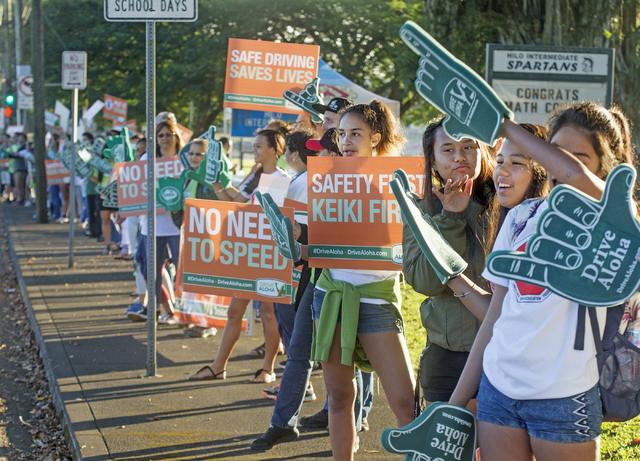
The Aloha spirit is everywhere in Hawaii. Drive with Aloha and throw up a shaka where ever you drive. Credit West Hawaii Today.
7. O‘ahu traffic bonus tips
Oʻahu locals are accustomed to politeness on the road. Simple things, such as throwing a shaka or friendly wave when someone lets you merge onto the road or stops for you in an intersection, will go a long way. You can show the same Aloha spirit in the following ways:
- Stop for pedestrians waiting at sidewalks to cross the street.
- While you’re at it, wave one or two cars in who are waiting to enter traffic from side streets.
- Allow a car or two lengths between you and the vehicle ahead when traffic is stopped to allow cross traffic access to the road.
- Obey all traffic laws and practice common courtesy while on the road.
When you have someone doing it for you, you’ll understand what a difference these actions make.
 Bio of Michael Muir, Guest Blogger
Bio of Michael Muir, Guest Blogger
Michael is a senior majoring in business finance at Brigham Young University – Hawaii and is from Dallas, Texas.

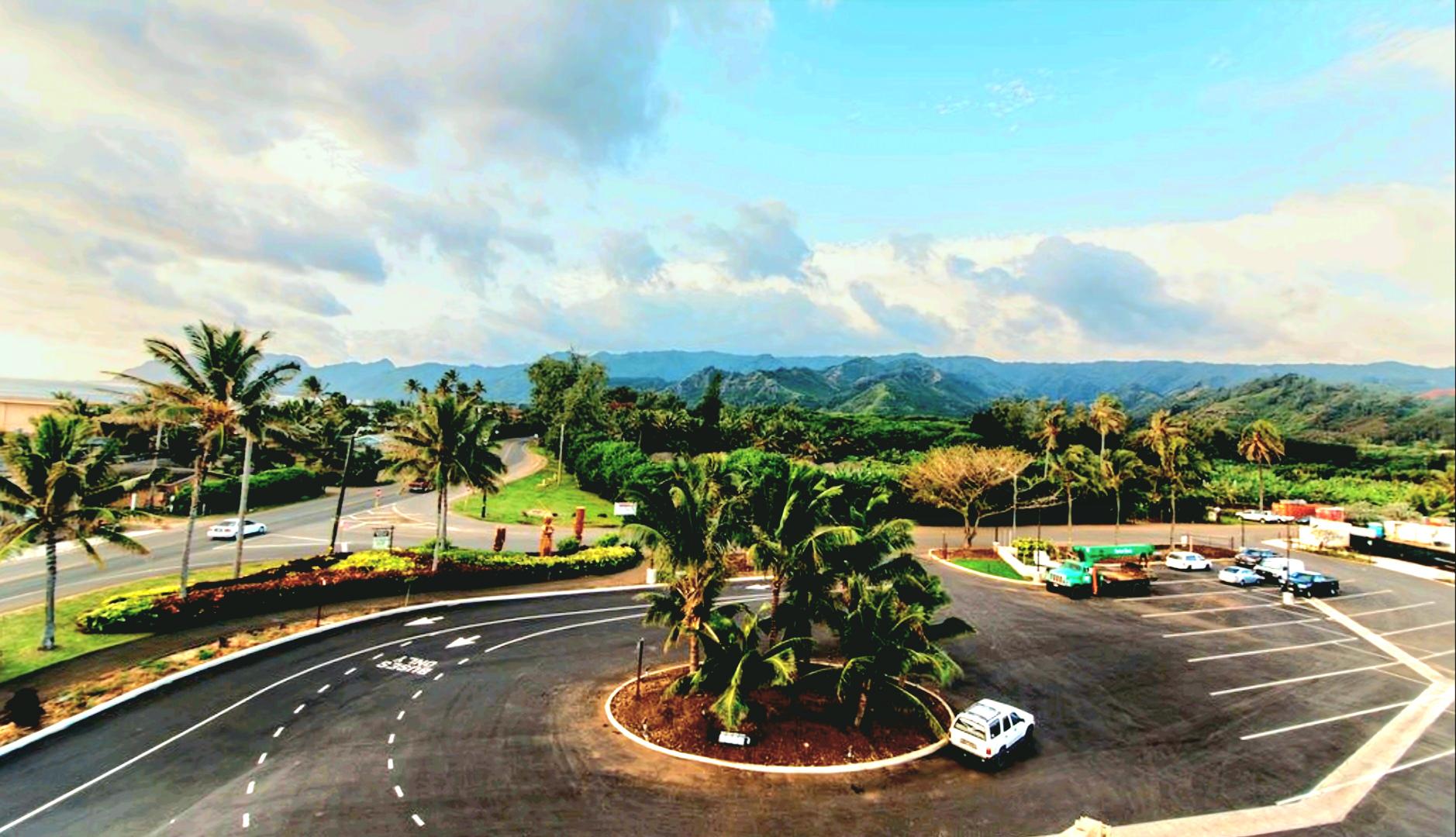
Great article!! I will be traveling there in October and will save these tips.
Thank you so much!
Aloha
Thank you for the information. We are traveling there for Thanksgiving and renting a car . This is very helpful, good to be informed of what to expect.
What license is required to drive?
In Honolulu? I am from New Zealand.
I researched your question. Here is the official answer from the Hawaii Department of Transportation:
What is the requirement to drive in Hawaii using my valid foreign license?
Countries that ratified the Geneva Convention on Road Traffic (1949), may use their foreign national driver’s license along with their valid passport to legally drive in Hawaii. The driver must be at least 18 years old and may use the foreign driver’s license no longer than one year after the date of entry in the United States. The foreign passport would indicate the date of entry in the U.S. It is strongly recommended that the foreign licensed driver possess an International Driving Permit (IDP) to avoid language barriers between the foreign driver and Hawaii’s law enforcement officials.
Additional information for renting cars with a foreign drivers license (provided by the Island of Kuai) is as follows:
If you’re planning on driving during your trip to Hawaii, you may be wondering if you can use your foreign driver’s license. The answer is yes, you can drive in Hawaii with a foreign license as long as you have it in your possession and it’s valid. However, there are a few things to keep in mind. First, you must be at least 18 years old to drive in Hawaii. Second, you must have your foreign license with you at all times while driving. Finally, if you’re planning on renting a car, you’ll need to obtain an International Driving Permit (IDP) in addition to your foreign license. (I suggest you check the policy directly with your car rental company.)
A valid driver’s license issued in their home country is sufficient for them to drive in Hawaii (minors must be at least 18 years old). Foreign driver’s licenses, accompanied by a photo, are frequently accepted by car rental companies. A vehicle must be registered and inspected on a regular basis in order to have its license plate, registration, and safety inspection all up to date. All learner’s permits and provisional permits are not permitted to be used.
International Driver’s Licenses (without an International Driver’s Permit) A foreign visitor to Hawaii can drive a car with an International Driver’s License if it is valid in their home country and is written in English.
I hope you greatly enjoy your visit.